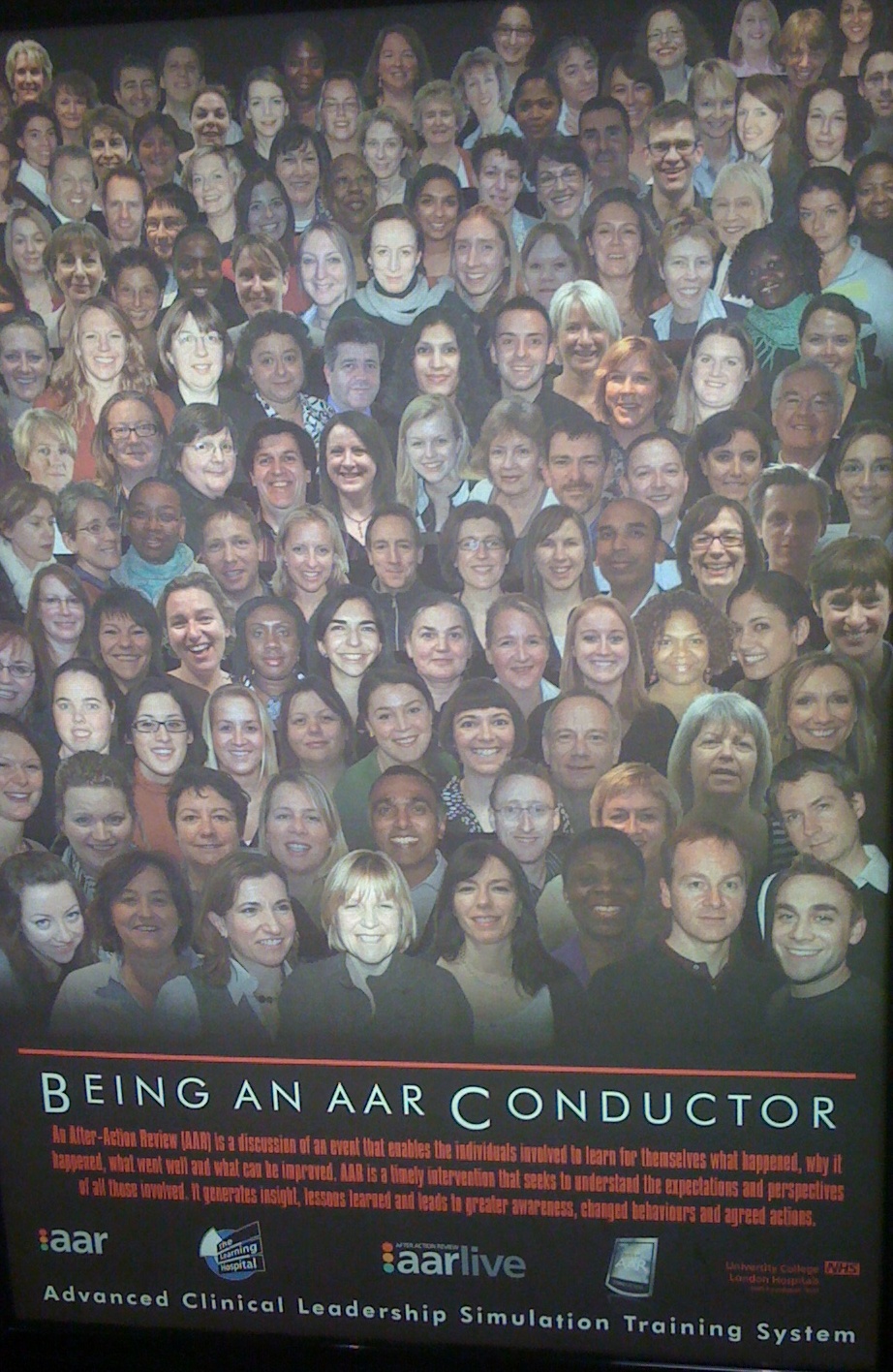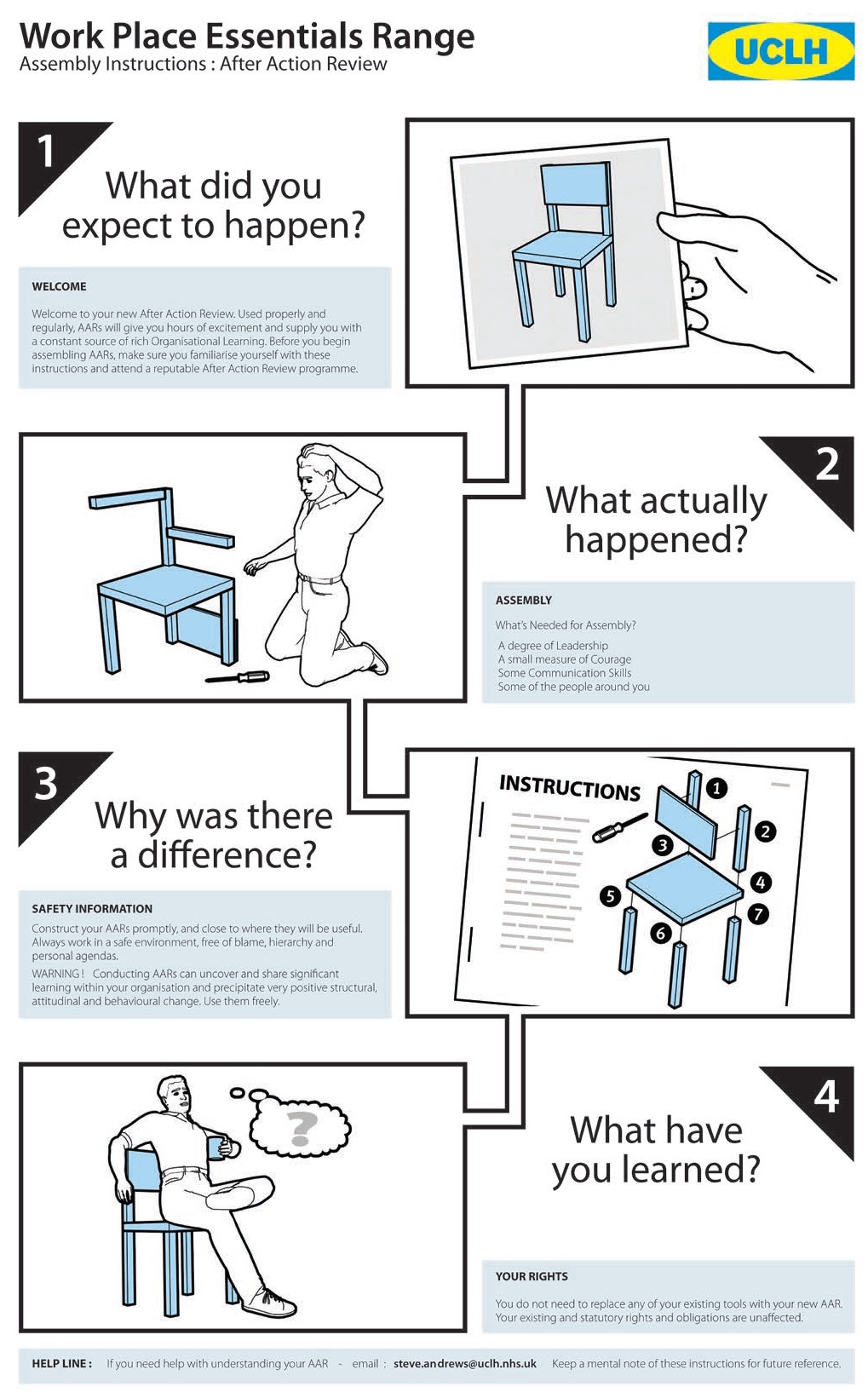I secretly love the moment when the air stewardess utters those magic words:
"as we prepare for take-off, please turn off all electronic devices..."
Actually, I think the whole plane breathes a collective sigh of relief. Fifteen minutes of enforced separation from the electronic world of work.
Fifteen minutes at the downtime oasis between the instant your iPhone/Blackberry goes off, and the moment your laptop is allowed to be switched on. We're so always-on, info-stimulated, response-charged that it's a bit of a shock to the system. Once I've leafed through the in-flight magazine and perused the safety card, I confess I sometimes find myself nodding off!
Fifteen minutes. That’s the time typically allocated for After Action Reviews (AARs), at least for informal AARs, pioneered by the US Army and now a widely used knowledge management approach. Let’s take a deeper look at this classic, simple process and see why it provides such a welcome quarter of an hour of reflection and learning for a team.
Firstly, the name can create a level of confusion. Informal AARs take place immediately after an event or activity and are designed to provide a safe, honest, space for a team to review performance and identify the learning. In that respect, they are really a tool for learning-whilst-doing. You wouldn’t use this kind of AAR to review a major project in order to generate detailed narrative, lessons and recommendations for the next team. There are other KM methods in your toolbox for those situations – such as Project Reviews, Retrospects and Sensemaking techniques.
The climate for an AAR is important. The US Army describe those fifteen minutes as a “rank-free zone”. University College London’s “Learning Hospital” (to be featured in a future edition of Inside Knowledge), which is training hundreds of its staff as AAR facilitators describe the technique as making it possible to “speak the truth to power”. The ubiquity of AARs in the hospital make it safe for a junior technician to comment on and challenge the actions of the most eminent surgeon, because everybody understands the need for a climate of honesty when patients’ lives are at stake.
Having clarified the name and the climate, let’s take a look at the four simple questions which comprise an AAR. Simple enough to be remembered without a crib-sheet, and familiar enough that people know exactly where they are in the process.








 This very real experience is then the basis for staff to conduct after action reviews, to be videoed, review and discuss with their colleagues, together with the Learning Hospital expert staff. So far, 400 staff have become “AAR Conductors”, carrying out reviews in a variety of situations.
This very real experience is then the basis for staff to conduct after action reviews, to be videoed, review and discuss with their colleagues, together with the Learning Hospital expert staff. So far, 400 staff have become “AAR Conductors”, carrying out reviews in a variety of situations.

 I had the pleasure last week of spending two days in Bangalore with
I had the pleasure last week of spending two days in Bangalore with 